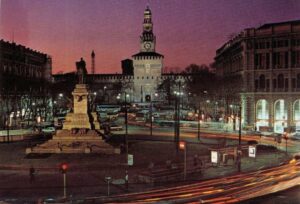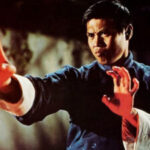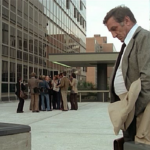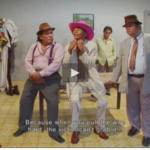October 29, 2024 Movies
Often the function of the movie theater went beyond simply being a container for a successful show.
The movie theaters of yesteryear. Legendary names, very different from today

In the theaters that once prevailed, cinema was fundamentally very different from today’s hideous multiplex system so beloved by the younger generation.
Often, the function of the cinema went beyond that of a mere container for a hit show, transforming itself into a meeting place and often into a loyal ally of an entire generation.
The classification of cinemas was clear and sharp.
First showings : usually located in the center of town, with a pharaonic entrance, a small and practical bar next to it, an elegantly dressed cashier and a “mask”, i.e. the person who ushered the spectator into the darkened auditorium, extremely immaculate in his neat and distinctive uniform, sometimes even equipped with a bright flashlight with a reassuring beam of light.
Second showings : often, though not always, located in the suburbs, they served the basic function of allowing the film to be seen at a cheaper price a month or so after its release.
Other cinemas : the movie had already been seen by most of its fans, and its run was over, now sold out and shabby, in smoky and shabby cinemas.
There were also the art-house theaters, which fortunately still exist today, where alternative titles were shown, and the red-light theaters.
Finally, there were the parochial theaters.
There was a time when the current fashion for disposable films was not yet widespread in movie theaters.
The same had an average stay of a month in the first viewings and about another month or so before going down the ladder to the last rerun.
Then there were situations in which the film stayed for months and months in large cinemas, which became the real criterion for evaluating a film’s success.
In short, it was almost possible to predict when a movie would be released in other theaters, and thus to plan one’s weekly viewing according to the meager financial resources available to most of us.
Inside the theaters, even the first-run ones, we began to become familiar with the first structural incongruities, such as the wooden seats covered in uncomfortable red faux leather (only in the extra-luxury theaters, since in the others, in addition to the lack of faux leather in favor of even more uncomfortable bare wood, the row of chairs sometimes swayed dangerously back and forth), the total lack of legroom once you were seated, which meant that your knees were at chin height, and your view of the screen was partially obscured by the usual gigantic behemoth that always stood in front of your seat.
None of this, however, interfered with the enjoyment of the long-awaited movie that had finally arrived in our city’s theaters.
The cashier, usually platinum blonde, would always hand out a green or orange candy that corresponded to the change of 10 lire, which, strangely enough, could not be found anywhere else but only in the cinemas.
The cinemas had names that to call legendary and qualified is definitely an understatement.
The name of a first-run theater was always and in any case more resounding than that of a continuation theater.
In Milan, for example, I remember that the first cinemas were called “Eden“, “Manzoni“, or “Impero“, all names that evoked a certain awe.
Already the second visions had much more common names ; in short, one could enter without being too well dressed.
The other showings were already distinguished by their names : no one expected to find a fancy movie theater when they decided to go to the “Leonardo” or the “XXII Marzo“.
The spectators who attended a screening had to endure two or three trailers, decidedly Americanized, which often showed the main scenes of the films in their entirety, so that you could go home and tell your friends that you had already seen a film that had not yet been shown in the city.
The commercials were quite small and usually consisted of a “slide show” of still images until the movie started.












